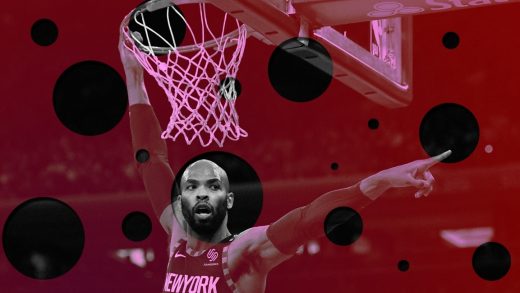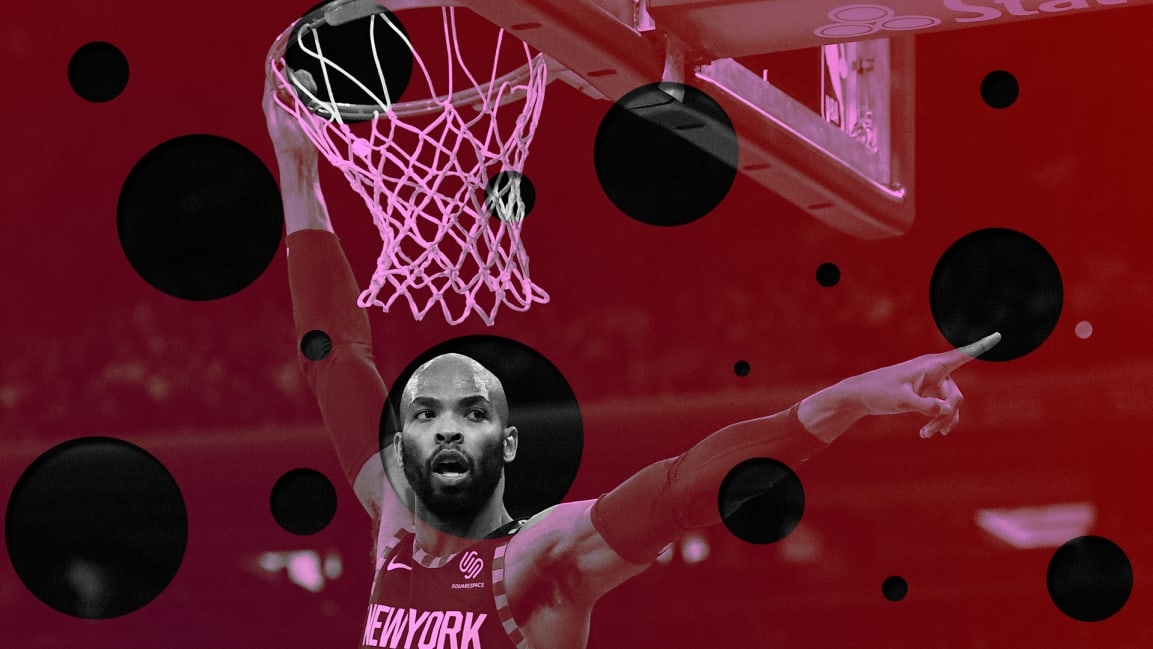How the NBA pulled off turning H-O-R-S-E into compelling pandemic TV
How bad are you missing sports right now?
Fans around the world are finding ever creative ways to pass the time and get their fix.
Some sports are slower. More about the strategy. pic.twitter.com/JMBaGJ1tSd
— Andrew Cotter (@MrAndrewCotter) April 9, 2020
For the NBA, which suspended its 2019-2020 season on March 11, the challenge has been to keep fans interested and engaged.
Since then, the league has launched a number of new content initiatives, all under the umbrella of “NBA Together.” Those include Instagram Live sessions with star players, a new interview stream with broadcaster Ernie Johnson on the league’s Twitter feed, posting practice drills for young players stuck at home, new programming on NBA TV that has players commenting on classic games, and more.
But last Sunday, the league took its experimentation a step further, teaming with ESPN to take the big leagues to the playground with a televised pandemic version of H-O-R-S-E. The tournament started with eight players that span current stars from the NBA and WNBA, as well as a few retired legends, and was whittled down to four semifinalists playing for the crown on Thursday. Aside from bragging rights among the players, as part of the game league sponsor State Farm is donating more than $200,000 to COVID-19 response efforts.
“Just miss it.” – @CP3
LOL#NBAHorse #NBAHorseChallenge pic.twitter.com/fzEZkJH7O6
— Chicago Sky (@wnbachicagosky) April 13, 2020
It was a largely DIY production, shot with Zoom on iPads and smartphones, and using family members and friends as camera operators. Not exactly prime-time quality, but Sunday’s broadcast still averaged 686,000 viewers on ESPN, according to Nielsen data. Last year in the same week, we were watching the first round of NBA playoffs, with nine NBA games averaging more than 1 million viewers. Since Sunday, each matchup has also earned hundreds of thousands of additional views on YouTube.
Chicago Sky’s Allie Quigley beat out Chris Paul, Chauncey Billups beat Trae Young, Mike Conley defeated Tamika Catchings, and Zach LaVine took out legend Paul Pierce.
The original idea came from Paul, who’s also the NBPA executive committee president. He approached the league and ESPN, in hopes of getting the players competing again and creating some entertainment for the fans at home. The criteria for participating players was generally to include current NBA and WNBA stars, as well as legends who had a regulation hoop at their house and could fit the competition schedule.
???? NBA HORSE Challenge ????
???? @ZachLaVine defeats @paulpierce34 in Round 1 of the NBA Horse Challenge presented by State Farm on ESPN! pic.twitter.com/OiTxcym9mH
— NBA (@NBA) April 13, 2020
Aldo DiCuffa, the NBA’s senior vice president of programming management, says that despite the challenges, the league’s overall commitment to innovation has helped it navigate the crisis. Whether it’s experimenting with remote player interviews during Summer League, or various camera angles with the G League, these efforts are giving them the confidence to try new things at an unprecedented time.
“From a production standpoint, the biggest challenge here was just going in having never produced an event like this before,” says DiCuffa. “Not just that, but six weeks ago, not even contemplating the idea of having to produce something with pandemic rules. It forces you to think about things in a new way. One of the unique challenges that came up was how weather became a factor. We had windy conditions, we had rainy conditions, we had cold weather, we had an indoor basketball court. That also impacted connectivity. Some courts weren’t that close to where the household Wi-Fi was set up. Just not things you’d normally have to think about when you’re in the confines of an NBA arena.”
Reviews were mixed, as any glance at Twitter will tell you, but both the NBA and ESPN maintain that this type of experiment is worth it, warts and all. As ESPN vice-president of production Mike Shiffman told Front Row, “We knew there would be plenty of logistical challenges and quirks, yet the goal is to provide a distraction for basketball fans who are looking to see NBA and WNBA stars compete in a safe, socially responsible manner.”
.@1MrBigShot beats @TheTraeYoung in the first round of the NBA HORSE Challenge after Trae initially built a 3-0 lead. pic.twitter.com/3CJQgpbBnq
— ESPN (@espn) April 12, 2020
Going into Sunday’s kickoff, the NBA wanted to take an aspect of its NBA2K video-game tournament among players to H-O-R-S-E. “The interaction between players was what made that tournament come alive, and it’s something we tried to bring to H-O-R-S-E as well,” says Paul Benedict, the NBA’s associate VP of broadcasting content management. “In the 2K tournament, Rui Hachimura from the Wizards had his roommate as his towel boy during the show, and it was really cool. You think video games and you think solitary activity, but this showed a more familial aspect. So for H-O-R-S-E, Chauncey Billups had his two daughters as his camera operators. Allie Quigley’s wife was hers, and Chris Paul’s son, who we’ve seen in press conferences since he was a little boy, was here, too. These are the people these stars are spending their time with. It just gave a warmer feeling to the show.”
Benedict says that while this crisis—and the suspended season—is far from an ideal situation for the league, the efforts to create and execute content for fans right now will help it in the future.
Fast Company , Read Full Story
(36)



